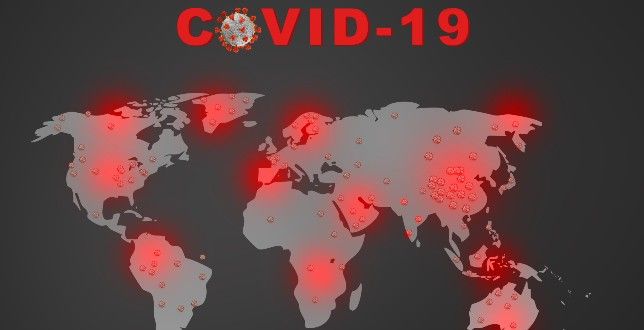COVID-19: How to Reduce Spread Without Vaccines and Monoclonal Treatments
With many of the new COVID-19 vaccines not as effective against the new variants, reducing their spread without pharmaceuticals is even more critical.
COVID-19 isn't going away, but vaccines and monoclonal treatments are not working as well with the new variants, so how do we protect ourselves?
(Adobe Stock)

With the new Omicron variants (BA.2.75.2, BQ.1, BQ.1.1, and XBB.1) our ability to both prevent and treat COVID-19 is severely limited. Most of the new variants are resistant to many of the monoclonal antibody treatments, and BQ.1.1 escapes all monoclonal treatments, including bebtelovimab. Currently, BQ.1.1 comprises 37% of isolates in the United States (as of Dec. 10, 2022).
Due to a multitude of drug interactions not everyone can take the antiviral medication Paxlovid. The mRNA vaccines, along with the BA.5 bivalent booster, have been found to have a disappointedly low ability to neutralize BA.2.75.2, BQ.1.1, and XBB.1. The effectiveness of the monovalent vaccine against the BA.2.75.2, BQ1.1, and XBB.1 variants was reduced 59, 70 and 102-fold, respectively, compared to the original variant. The bivalent booster produced neutralization, which was 37, 50 to 103-fold lower. However, previous infection increased neutralization ability by 3.7, 3.7, and 2.9-fold.
Even more worrisome is that after January 11, 2021, the pandemic emergency will no longer be in effect, and government payment for COVID-19 treatments may cease. The United States Government buys Paxlovid at a bulk discount of $530 per course. It is suspected the drug will cost much more to private citizens. The mRNA COVID-19 vaccine will quadruple from $30 a shot to $120. The large price tag of treatments will effectively price out a large segment of our population who will be willing to play Omicron (Russian) roulette.
Combined with the risks of long COVID-19, all of this means we need to reemphasize non-pharmaceutical strategies to reduce the spread of SARS-CoV-2. Three recent articles have placed renewed emphasis on ventilation, spread by fomites, and outdoor precautions.
Ventilation is of utmost importance. A recent study by Buonanno, et al, involving 316 classrooms and 205,347 students, found that infection rates decreased 80% with ventilation rates greater than 10 L s−1 student−1 (10 liters per second per student). This observation underscores the importance of ventilation and utilizing strategies such as upper-room germicidal ultraviolet (UV-C) ventilation to efficiently achieve equivalent air exchanges. In addition, the public can screen for CO2 levels using portable monitors, which can be purchased for less than $150. Outdoors, CO2 levels are 400 parts per million (ppm). Indoors, well-ventilated areas should be around 500 ppm; most indoor venues will be below 800 ppm. Above 1000 ppm, increasing ventilation by opening a window should be done. CO2 monitors can determine poorly ventilated venues, but ventilation must be significantly higher to slow down the spread of SARS-CoV-2.
Spread by surfaces or fomites gained new attention with the publication of a United Kingdom Foods and Standards Agency report regarding SARS-CoV-2 on food surfaces. The good news is that the report concluded it is “very unlikely that you could catch coronavirus via food.” However, there were cases where an infectious virus was recovered. Because SARS-CoV-2 is highly infectious, touching food and then your face could theoretically transmit the virus. For most foods, there is a significant drop in virus levels over the first 24 hours. But refrigeration increased viability up to a week (when the testing period stopped). Foods high in moisture, protein, and fat possibly offer a higher degree of protection from the virus. Foods such as apples and olives inactivated the virus very quickly. Food packaging had decreased virus levels after 24 hours. However, cold storage was the most problematic. As with any foods which were eaten prepandemic, washing produce and cleaning one’s hands and countertops are the cornerstones of good public health. Remember, a plethora of other pathogens are transmitted by food, including salmonella and Escherichia coli.
Finally, a report from the Chinese Center for Disease Control and Prevention described a case study of outdoor transmission traced back to a jogger in a public park. For 35 minutes the source patient jogged along a lake at a local park, exposing 2,836 people. Thirty-nine case transmissions were detected. All 39 lacked previous exposure. Thirty-eight of the 39 cases did not wear a mask. This case illustrates how being outdoors does not prevent the transmission of SARS-CoV-2. If an individual is within 6 feet of another, large droplet spread can occur. Heavy breathing associated with jogging can produce ample large droplets which can be propelled a significant distance. Thus, in crowded outdoor settings, wear an N95 mask. Another observation was the robust case tracking through both cell phones and facial recognition (tracking which is so efficient it has generated its own controversy).
Vaccines are losing their effectiveness. Although their ability to substantially prevent hospitalizations and death has remained intact, the degree of prevention with current variants cannot be determined until we are well into the COVID-19 wave. Now, more than ever, we need to take a layered approach and add non-pharmaceutical strategies to mitigate disease from and spread to SARS-CoV-2.
Show, Tell, Teach: Elevating EVS Training Through Cognitive Science and Performance Coaching
April 25th 2025Training EVS workers for hygiene excellence demands more than manuals—it requires active engagement, motor skills coaching, and teach-back techniques to reduce HAIs and improve patient outcomes.
The Rise of Disposable Products in Health Care Cleaning and Linens
April 25th 2025Health care-associated infections are driving a shift toward disposable microfiber cloths, mop pads, and curtains—offering infection prevention, regulatory compliance, and operational efficiency in one-time-use solutions.
Phage Therapy’s Future: Tackling Antimicrobial Resistance With Precision Viruses
April 24th 2025Bacteriophage therapy presents a promising alternative to antibiotics, especially as antimicrobial resistance continues to increase. Dr. Ran Nir-Paz discusses its potential, challenges, and future applications in this technology.